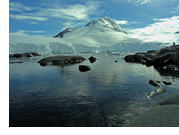|
||||||||||||||
Overview Apart
from the obvious links to physical geography, the growth of so many branches
within human geography which includes political, social and economic branches
means that the Stern Review offers much scope for study. Moreover, the increasing
uses of quantitative approaches lend themselves to areas like environmental
geography, geomatics and demography and population studies. The links with
science in a broad sense (ecology, geology) have never been stronger, nor
the exploitation of mathematical methods (modelling, statistics) more relied
upon, not least with the advent of remote sensing and GIS. Qualitative work
has also developed with links to ethnography and anthropology and will be
increasingly important in understanding the human response to our future. Apart
from the obvious links to physical geography, the growth of so many branches
within human geography which includes political, social and economic branches
means that the Stern Review offers much scope for study. Moreover, the increasing
uses of quantitative approaches lend themselves to areas like environmental
geography, geomatics and demography and population studies. The links with
science in a broad sense (ecology, geology) have never been stronger, nor
the exploitation of mathematical methods (modelling, statistics) more relied
upon, not least with the advent of remote sensing and GIS. Qualitative work
has also developed with links to ethnography and anthropology and will be
increasingly important in understanding the human response to our future.This section therefore seeks to give a basic framework of areas where the Stern Review offers a starting point or a focus in its own right, with sub-sections looking at a set of illustrative topics.  The
place of forests in particular and land use in general are key areas both
as contributory to climate change but also as targets for impact. In a similar
manner but far less well understood or obviously connected are the seas.
Human activity whether in the form of developing culture or industry impacts
on and will be impacted on by climate change, both physically and in social
and political terms. Historically geography has often focused on migration
e.g. from rural to urban centres and climate change will inevitably necessitate
more and different migration for human and other life. The development indeed
survival of nations, as well as individuals will be altered as climate change
shapes new societies, politics, industry and life on the planet or as Stern
puts it in the conclusions from the Review: The
place of forests in particular and land use in general are key areas both
as contributory to climate change but also as targets for impact. In a similar
manner but far less well understood or obviously connected are the seas.
Human activity whether in the form of developing culture or industry impacts
on and will be impacted on by climate change, both physically and in social
and political terms. Historically geography has often focused on migration
e.g. from rural to urban centres and climate change will inevitably necessitate
more and different migration for human and other life. The development indeed
survival of nations, as well as individuals will be altered as climate change
shapes new societies, politics, industry and life on the planet or as Stern
puts it in the conclusions from the Review:“Such a radical change in the physical geography of the world must lead to major changes in the human geography - where people live and how they live their lives.” |
||||||